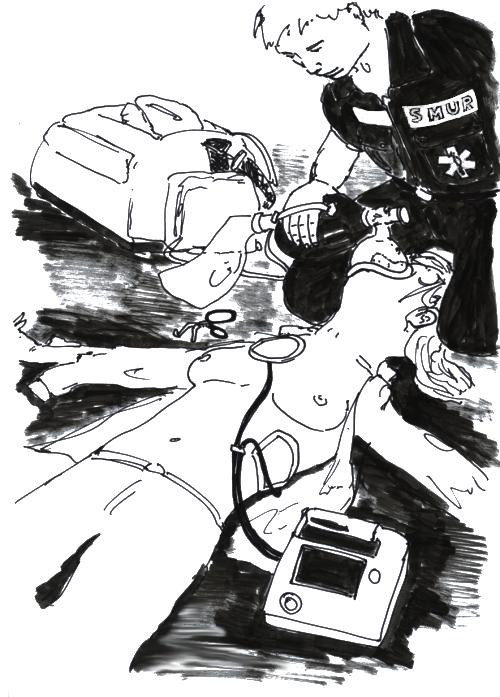Keraunomedicine
Keraunomedicine is the medical study of lightning casualties. The term may have been coined by Chris Andrews, a lightning and electrical injury researcher.[1] Lightning injuries result from three factors: electrical damage, intense heat, and the mechanical energy which these generate. While sudden death is common because of the huge voltage of a lightning strike, survivors often fare better than victims of other electrical injuries caused by a more prolonged application of lesser voltage.[2]
Path to victim
Lightning can incapacitate humans in four different ways:
- Direct strike
- 'Splash' from nearby objects struck
- Ground strike near victim causing a difference of potential in the ground itself (due to resistance to current in the Earth), amounting to several thousand volts per foot, depending upon the composition of the earth that makes up the ground at that location (sand being a fair insulator and wet, salty and spongy earth being more conductive).
- EMP or electromagnetic pulse from close strikes - especially during positive lightning discharges
In a direct hit, the electrical charge strikes the victim first. Splash hits occur when lightning prefers a victim (with lower resistance) over a nearby object that has more resistance, and strikes the victim on its way to ground. Ground strikes, in which the bolt lands near the victim and is conducted through the victim and his or her connection to the ground (such as through the feet, due to the voltage gradient in the earth, as discussed above), can cause great damage.
Damaging Forces
Heat
A bolt of lightning can reach temperatures approaching 28,000 degrees Celsius (50,000 degrees Fahrenheit) in a split second. This is about five times hotter than the surface of the sun[3]. There is sometimes spectacular and unconventional lightning damage. Hot lightning (high-current lightning) which lasts for more than a second can deposit immense energy, melting or carbonizing large objects. One such example is the destruction of the basement insulator of the 250-metre-high central mast of longwave transmitter Orlunda, which led to its collapse. The intense heat generated by a lightning strike can burn tissue, and cause lung damage, and the chest can be damaged by the mechanical force of rapidly expanding heated air.
Electricity
Counterintuitively, if the victim's skin resistance is high enough, much of the current will flash around the skin or clothing to the ground in a direct strike, resulting in a surprisingly benign outcome.
The lightning often leaves skin burns in characteristic Lichtenberg figures, sometimes called lightning flowers; they may persist for hours or days, and are a useful indicator for medical examiners when trying to determine the cause of death. They are thought to be caused by the rupture of small capillaries under the skin, either from the current or from the shock wave. The intense electrical energy can cause a loss of consciousness; it is also speculated that the EMP created by a nearby lightning strike can cause cardiac arrest.
Mechanical force
The extreme mechanical force generated by a lightning strike may result in a loss of consciousness. Template:Expand
Effects & Treatment
Immediate

The most critical injuries are to the circulatory system, the lungs, and the central nervous system. Many victims suffer immediate cardiac arrest and will not survive without prompt emergency care, which is safe to administer because the victim will not retain any electrical charge after the lightning has struck (of course, the helper could be struck by a separate bolt of lightning in the vicinity). Others incur myocardial infarction and various cardiac arrhythmias, either of which can be rapidly fatal as well. Loss of consciousness is very common immediately after a strike. Amnesia and confusion of varying duration often result as well.
Long-term
A complete physical examination by paramedics or physicians may reveal ruptured eardrums, and ocular cataracts may develop, sometimes more than a year after an otherwise uneventful recovery. Long-term injuries are usually neurological in nature, including memory deficit, sleep disturbance, chronic pain, and chronic dizziness.[4]
Notes
See also
External links
- Lightning Strike & Electric Shock Survivors International, Inc., a non-profit support group by and for survivors, their families, and other interested parties.
- National Oceanic and Atmospheric Administration bibliography
References
- ↑ Chris Andrews - JOLR
- ↑ Gretel Ehrlich (1994). A match to the heart. Penguin Books. ISBN 0-14-017937-2. The author tells of her slow recovery after being struck by lightning.
- ↑ Lightning?
- ↑ http://www.lightningsafety.noaa.gov/resources/Ltg%20Safety-Facts.pdf OSAA Lightning Safety Facts